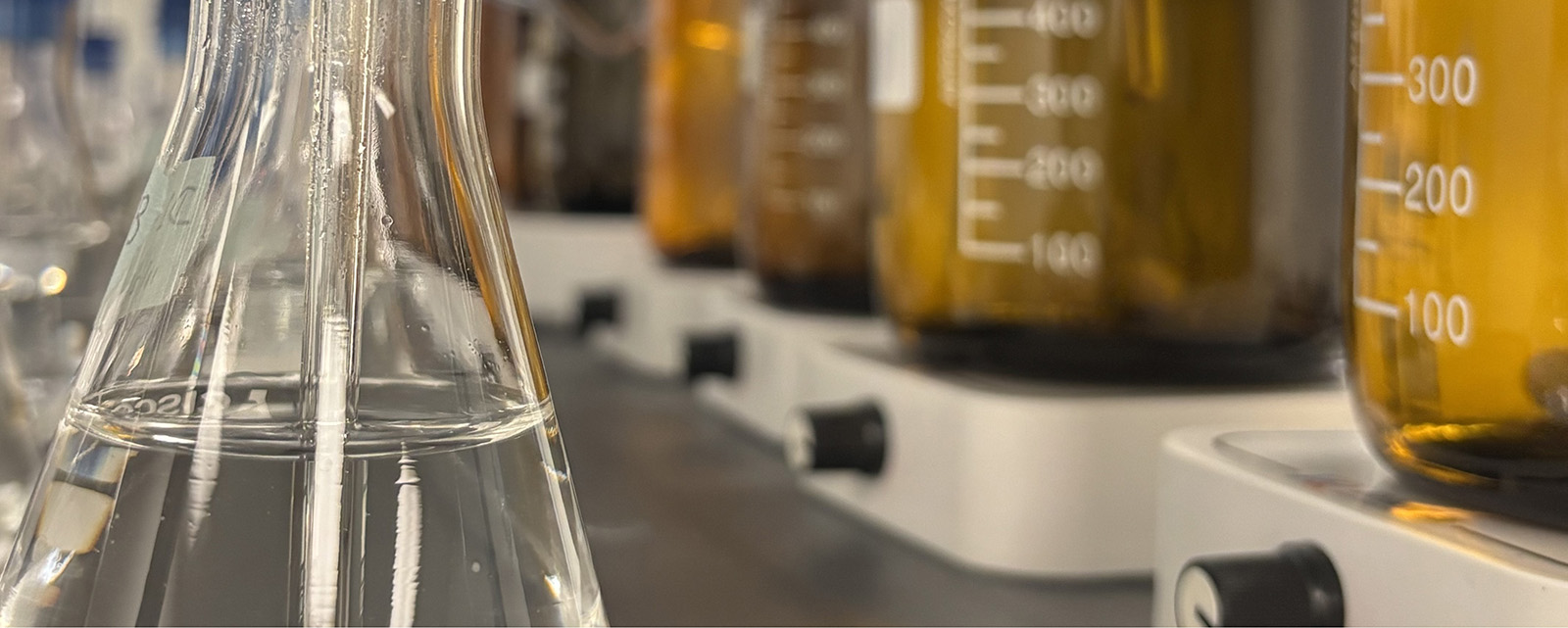Summary
ISO 14853 is a test that determines the biodegradability of plastic materials in an anaerobic, aqueous medium. This test measures the carbon conversion in the sample to the gaseous forms of carbon, CO2, and CH4, during biodegradation under conditions found in anaerobic digesters. This test can last up to 90 days based on the needs of your products.
ISO 14853 Testing Method
The test substance is added to a sealed vessel with digested sludge with a solid concentration of 1 g/L to 3 g/L. This vessel is incubated at 35 ± 2ºC for up to 90 days. The activity of the sludge is measured by running parallel blank and reference controls. Additionally, triplicate test vessels for each group are prepared. The increase in headspace pressure in the vessels or the volume of biogas is measured, and the inorganic carbon is measured at the end of the test.
To calculate the amount of carbon produced (inorganic carbon and methane) resulting from the biodegradation of the test substance is calculated from the net gas production and the net inorganic carbon formulation in the liquid phase. The extent of biodegradation is calculated from total inorganic carbon and methane-C produced as a percentage of the measured or calculated amount of carbon added as a test substance.
Here are some additional details on the ISO 14853 test method:
- Materials that can be tested:
- Natural and/or synthetic polymers, copolymers or mixtures of these
- Plastic materials which contain additives such as plasticizers, colorants or other compounds
- Water-soluble polymers
- Materials that do not inhibit the microorganisms present in the inoculum under the test conditions
- Inoculum information:
- Digested sludge derived from a digester at a wastewater treatment plant which treats predominantly domestic sewage
- 1-3g/L of total suspended solids
- May be pre-digested for up to 7 days to reduce the organic content in the inoculum
- Inoculum dosage: 1-3g/L of total suspended solids
- Test substance dosage: 20-200mg/L organic carbon
- Reference substance: well defined anaerobically biodegradable polymer (e.g. cellulose, poly-β-hydroxybutyrate, or polyethylene glycol 400)
- Reactor: Normally 0.1-1L pressure-resistant glass test vessels with headspace being 10-30% of the total volume
- Number of reactors: 3 for each test substance, 3 for blank control, and 3 for reference control
- Temperature: 35 ± 2ºC
- pH: 7 ± 0.2
- Duration: Normally up to 90 days
- Measurement:
- Pressure increase in the headspace for calculating the total amount of methane (CH4)
- Inorganic carbon in the test solution at the end of the test
- Test validity criteria:
- Over 70% of degradation for reference within 60 days
- The difference between the percentage of biodegradation of the reference in different vessels is less than 20% of the mean value
- No oxygen is present in the reactors
- pH should not exceed the range of 7 ± 1 if insufficient biodegradation has not taken place
For ISO 14853, Contact Aropha Today
Our team at Aropha strives to provide our customers with streamlined, efficient biodegradability testing. Whether you are looking to test lubricants, plastics, personal care products, or another material or product, our team has the experience and capabilities to do so. With our combination of our digital twin simulation platform and lab biodegradability testing, we can provide accurate results in a short timeline.
ISO 14853 Requirement and Applicability
Different testing methods are applicable for materials with different properties. Below is a summary of the applicability of ISO 14853. Please check our Method Selection Guide to select the most appropriate method for your materials. You can also find the applicability for many other methods in our Resource Center.| Test | Analytical method | Sample info required * | Poorly soluble | Volatile | Adsorbing |
|---|---|---|---|---|---|
| ISO 14853 | CO2 and CH4 evolution | Organic carbon content * | + | +/- | + |
*“Sample info required” is the information needed to calculate the biodegradation percentages. This must be available for a selected method.
*“Organic carbon content” is the ratio of the organic carbon weight to the weight of the sample. It can be calculated by the sample formula (e.g., acetic acid C2H4O2, carbon content is 12*2/(12*2+1*4+16*2)=40%). Try our Online C% Calculator. If the formula is unknown, we can send the sample out to a third party lab for you for analysis (normally $110 with a 10-day turnaround time).
Pricing
$1299/sample for High-Throughput Screening$2399/sample for Biodegradability Certification

